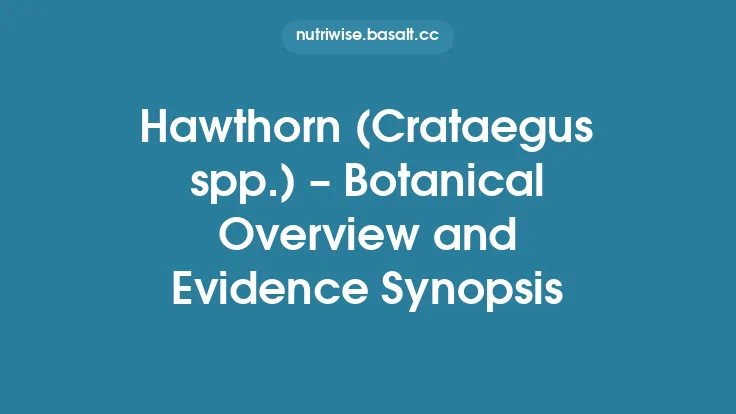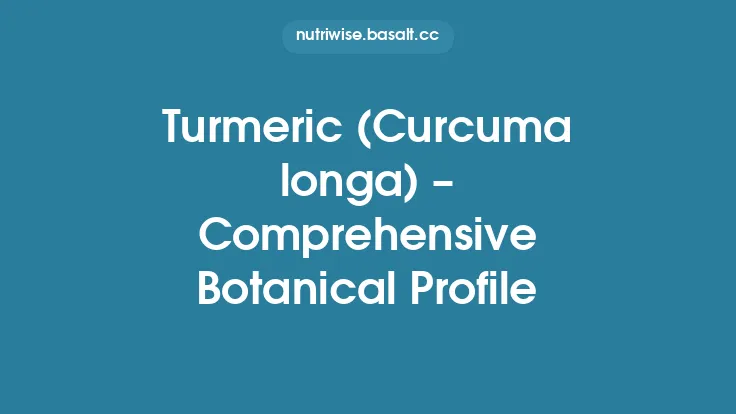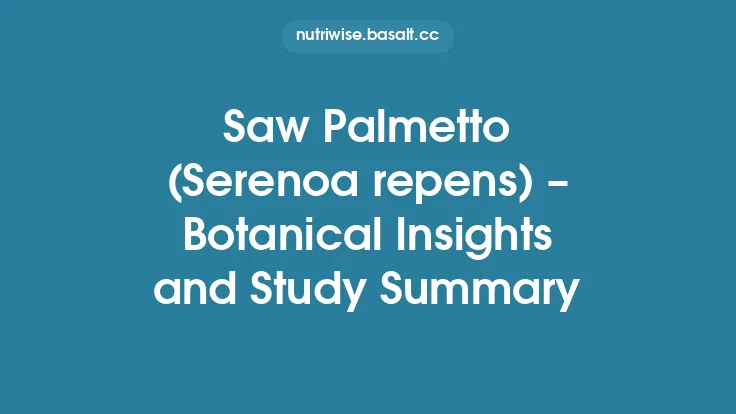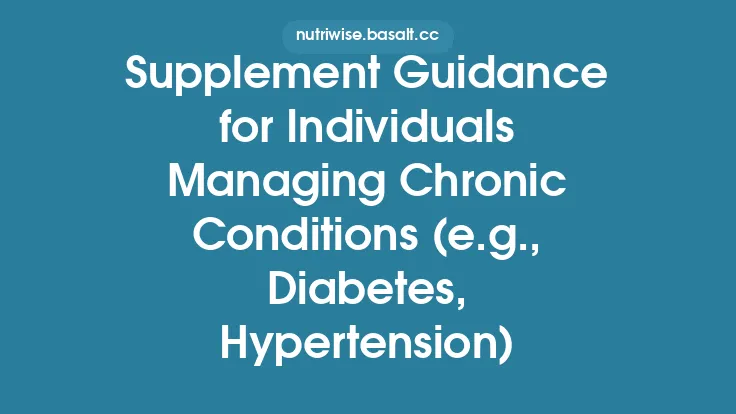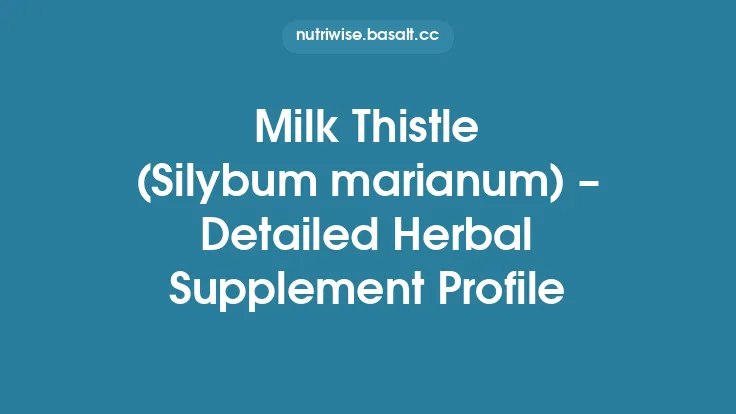Garlic (Allium sativum) has been cultivated for millennia and occupies a unique niche at the intersection of culinary tradition and modern nutraceutical science. While its pungent flavor and aroma have made it a staple in kitchens worldwide, the same phytochemical richness that defines its sensory profile also underpins a broad spectrum of health‑related applications. This overview synthesizes current botanical knowledge, phytochemical composition, traditional uses, modern processing techniques, pharmacokinetic behavior, safety considerations, and the state of clinical research, providing a comprehensive reference for professionals, researchers, and informed consumers alike.
Botanical Description
Garlic belongs to the Amaryllidaceae family, subfamily Allioideae, and is a perennial, herbaceous plant that propagates via underground cloves. The plant typically reaches 30–60 cm in height, with a basal rosette of narrow, linear leaves (2–4 mm wide) that emerge from a bulb composed of 5–15 individual cloves. Each clove is encased in a papery tunic and contains a dense arrangement of parenchymal cells rich in sulfur‑containing compounds. The inflorescence is an umbel of small, white to pinkish flowers that develop after the vegetative phase, though most commercial cultivars are harvested before flowering to preserve bulb quality.
Key morphological identifiers include:
- Bulb structure: Multi‑clove arrangement with a central basal plate.
- Leaf morphology: Flat, strap‑like leaves with a characteristic garlic odor when crushed.
- Flowering habit: Rare in cultivated varieties; when present, the umbel bears 6–12 tepals.
Phytochemistry and Active Constituents
Garlic’s therapeutic potential is largely attributed to its organosulfur chemistry. The primary bioactive constituents can be grouped into three categories:
- Alliin and its derivatives – The precursor S‑allyl‑L‑cysteine sulfoxide (alliin) is enzymatically converted to allicin (diallyl thiosulfinate) upon tissue disruption. Allicin is unstable, rapidly decomposing into a suite of secondary sulfur compounds, including diallyl disulfide (DADS), diallyl trisulfide (DATS), and ajoene.
- S‑allyl cysteine (SAC) and S‑allyl‑L‑cysteine (SAC) – Water‑soluble, stable derivatives formed during aging or fermentation processes (e.g., black garlic). SAC exhibits antioxidant and neuroprotective properties distinct from volatile thiosulfinates.
- Non‑sulfur constituents – Flavonoids (quercetin, kaempferol), saponins, polysaccharides, and trace minerals (selenium, manganese). These components contribute to immunomodulatory and anti‑inflammatory effects.
The relative abundance of these compounds varies with cultivar, agronomic conditions, and post‑harvest processing. For instance, fresh raw garlic contains up to 5 % allicin by weight, whereas aged extracts may contain >30 % SAC.
Traditional Uses and Historical Context
Historical records trace garlic’s medicinal use to ancient Egypt, where it was administered to laborers and athletes for stamina enhancement. Classical Greek and Roman texts cite its application for respiratory ailments, wound healing, and cardiovascular support. In Traditional Chinese Medicine (TCM), garlic (大蒜, dà suàn) is classified as a warming herb that dispels “cold‑damp” conditions, promotes qi circulation, and resolves phlegm. Ayurvedic literature describes garlic (Lashuna) as a “rasayana” (rejuvenative) that balances the Kapha dosha, supports digestion, and fortifies the immune system.
Across cultures, the common therapeutic themes include:
- Cardiovascular health: Blood pressure modulation, lipid profile improvement.
- Antimicrobial activity: Treatment of infections, especially respiratory and gastrointestinal.
- Digestive support: Stimulation of gastric secretions and bile flow.
These ethnobotanical practices have informed contemporary research agendas, prompting systematic investigations into garlic’s bioactivities.
Cultivation and Harvesting Practices
Optimal garlic production hinges on precise control of planting depth, spacing, and soil fertility. Key agronomic parameters:
- Soil: Well‑drained loam with pH 6.0–7.0; high organic matter enhances bulb development.
- Planting: Cloves are planted 5–7 cm deep, spaced 10–15 cm apart in rows 30 cm apart.
- Irrigation: Moderate watering; excess moisture predisposes to fungal diseases (e.g., *Botrytis* spp.).
- Harvest timing: Bulbs are harvested when the lower leaves begin to yellow and dry, typically 90–120 days after planting, depending on cultivar and climate.
Post‑harvest handling includes curing (drying at 25–30 °C with 70 % relative humidity for 2–3 weeks) to reduce moisture content below 15 %, thereby extending storage life and preserving phytochemical integrity.
Processing Methods for Supplement Forms
Garlic is available in multiple supplement formats, each employing distinct processing techniques that influence the profile of active constituents:
- Raw powdered garlic – Freeze‑drying or low‑temperature dehydration preserves allicin precursors but may result in rapid allicin degradation upon rehydration.
- Aged garlic extract (AGE) – Fermentation of sliced garlic in aqueous ethanol at 60–70 °C for up to 20 months yields a product rich in SAC and stable antioxidant compounds. The aging process reduces odor and irritant potential.
- Garlic oil (essential oil) – Steam distillation concentrates volatile thiosulfinates (e.g., allicin, DADS). Oil formulations are typically encapsulated to mask odor and improve gastrointestinal tolerance.
- Garlic tablets/capsules – Standardized to a specific allicin equivalent (AE) or SAC content, often employing enteric coating to protect against gastric acid degradation and to target release in the small intestine.
- Black garlic – Controlled Maillard reaction at 60–80 °C and high humidity for 30–40 days transforms raw garlic into a sweet, dark product with elevated SAC and antioxidant capacity.
Manufacturers must adhere to Good Manufacturing Practices (GMP) and employ validated analytical methods (e.g., HPLC, GC‑MS) to ensure batch-to-batch consistency of active markers.
Pharmacokinetics and Bioavailability
The pharmacokinetic profile of garlic’s sulfur compounds is complex due to rapid metabolism and extensive conjugation. Key points:
- Allicin is highly reactive, undergoing immediate conversion to DADS, DATS, and ajoene in the gastrointestinal lumen. These metabolites are absorbed via passive diffusion and undergo hepatic oxidation, yielding sulfide and sulfate conjugates excreted in urine.
- S‑allyl cysteine (SAC) exhibits superior stability and bioavailability. After oral ingestion, SAC is absorbed intact, reaches peak plasma concentrations within 1–2 hours, and displays a half‑life of approximately 4–6 hours. It is distributed to multiple tissues, including the brain, where it exerts neuroprotective effects.
- Polysaccharide fractions demonstrate limited absorption but may modulate gut microbiota, indirectly influencing systemic immunity.
Food matrix effects, such as co‑administration with fats, can enhance the absorption of lipophilic thiosulfinates. Enteric-coated formulations aim to protect allicin precursors from gastric degradation, thereby improving systemic exposure.
Safety, Contraindications, and Drug Interactions
Garlic is generally recognized as safe (GRAS) for culinary use, but supplemental doses can elicit adverse effects in susceptible individuals:
- Gastrointestinal irritation: High doses may cause heartburn, nausea, or flatulence due to sulfur compound irritation.
- Bleeding risk: Garlic possesses antiplatelet activity through inhibition of thromboxane synthesis and platelet aggregation. Patients on anticoagulants (e.g., warfarin, direct oral anticoagulants) should monitor coagulation parameters and consider dose adjustments.
- Allergic reactions: Rare but documented cases of contact dermatitis and respiratory hypersensitivity.
- Hypoglycemia: Garlic may potentiate the effect of antidiabetic agents; glucose monitoring is advised.
Pregnant and lactating women should limit intake to culinary amounts, as high supplemental doses lack sufficient safety data. Children under 12 years are generally advised against concentrated garlic supplements.
Clinical Evidence and Research Highlights
A substantial body of randomized controlled trials (RCTs) and meta‑analyses has examined garlic’s impact on cardiovascular, metabolic, and immune parameters:
- Blood pressure: Multiple RCTs report modest reductions in systolic (average –4 mm Hg) and diastolic (average –2 mm Hg) blood pressure with daily intake of 600–1200 mg aged garlic extract over 12 weeks. The effect appears more pronounced in hypertensive cohorts.
- Lipid profile: Standardized garlic supplements (allicin equivalent 5–6 mg/day) have demonstrated reductions in total cholesterol (≈5 %) and low‑density lipoprotein (LDL) cholesterol (≈7 %) without significant changes in high‑density lipoprotein (HDL).
- Antimicrobial activity: In vitro studies confirm broad‑spectrum activity against *Staphylococcus aureus, Escherichia coli, and Candida albicans*. Clinical data on prophylactic use for common colds are mixed; some trials show reduced incidence, while others find no effect.
- Cancer chemoprevention: Observational studies suggest an inverse association between long‑term garlic consumption and gastrointestinal cancers, particularly gastric and colorectal. Mechanistic investigations attribute this to DNA repair modulation, apoptosis induction, and inhibition of carcinogen activation.
- Immune modulation: Aged garlic extract has been shown to enhance natural killer (NK) cell activity and increase cytokine production (e.g., IFN‑γ) in elderly populations, potentially contributing to improved vaccine responses.
Overall, the evidence supports modest cardiovascular benefits, with ongoing research aimed at elucidating dose‑response relationships and identifying responder subpopulations.
Regulatory Status and Quality Standards
In most jurisdictions, garlic supplements are regulated as dietary supplements rather than pharmaceuticals. Key regulatory considerations include:
- United States (FDA): Must comply with the Dietary Supplement Health and Education Act (DSHEA). Manufacturers are responsible for ensuring safety and accurate labeling; the FDA may issue warning letters for false claims.
- European Union (EFSA): Requires a novel food assessment for certain concentrated extracts. Health claims are limited to those substantiated by EFSA opinions (e.g., “contributes to the normal function of the immune system”).
- International Standards: The International Organization for Standardization (ISO) and the United States Pharmacopeia (USP) provide monographs specifying assay methods for allicin equivalents, SAC content, and microbial limits.
Third‑party certification programs (e.g., NSF Certified for Sport, ConsumerLab) offer additional assurance of purity, absence of contaminants (heavy metals, pesticides), and label accuracy.
Practical Guidance for Consumers
When selecting a garlic supplement, consider the following criteria:
- Standardization: Look for products specifying allicin equivalents (AE) or SAC content per serving. Typical effective doses range from 300–600 mg of AGE (providing ~1.3 mg SAC) to 600 mg of raw garlic powder (≈5 mg AE).
- Formulation: Choose enteric‑coated tablets or aged extracts if gastrointestinal tolerance is a concern. Oil capsules may be preferable for rapid allicin delivery but often have stronger odor.
- Quality certifications: Verify third‑party testing and compliance with GMP. Check for absence of additives that may interfere with absorption (e.g., high levels of calcium carbonate).
- Timing: Consuming garlic supplements with meals containing modest fat can improve absorption of lipophilic sulfur compounds.
- Medical considerations: Discuss with a healthcare professional if you are on anticoagulants, antiplatelet agents, or have a bleeding disorder.
Future Directions and Emerging Research
The next frontier for garlic research lies in precision nutraceuticals and synergistic formulations:
- Nanotechnology: Encapsulation of allicin in liposomal or polymeric nanoparticles aims to enhance stability, bioavailability, and targeted delivery to vascular endothelium.
- Microbiome interactions: Emerging data suggest garlic-derived prebiotic fibers modulate gut microbial composition, potentially amplifying systemic anti‑inflammatory effects.
- Genomic profiling: Pharmacogenomic studies are investigating how genetic polymorphisms in metabolizing enzymes (e.g., GSTM1, CYP2E1) influence individual responses to garlic supplementation.
- Combination therapies: Trials pairing garlic extracts with statins, antihypertensives, or antidiabetic agents are evaluating additive or synergistic benefits, while monitoring safety endpoints.
Continued interdisciplinary collaboration among botanists, chemists, clinicians, and regulatory scientists will be essential to translate garlic’s rich phytochemistry into evidence‑based health solutions.
*This overview consolidates current botanical, chemical, and clinical knowledge on garlic (Allium sativum) as a dietary supplement, offering a reliable reference for professionals seeking an evergreen, scientifically grounded resource.*
